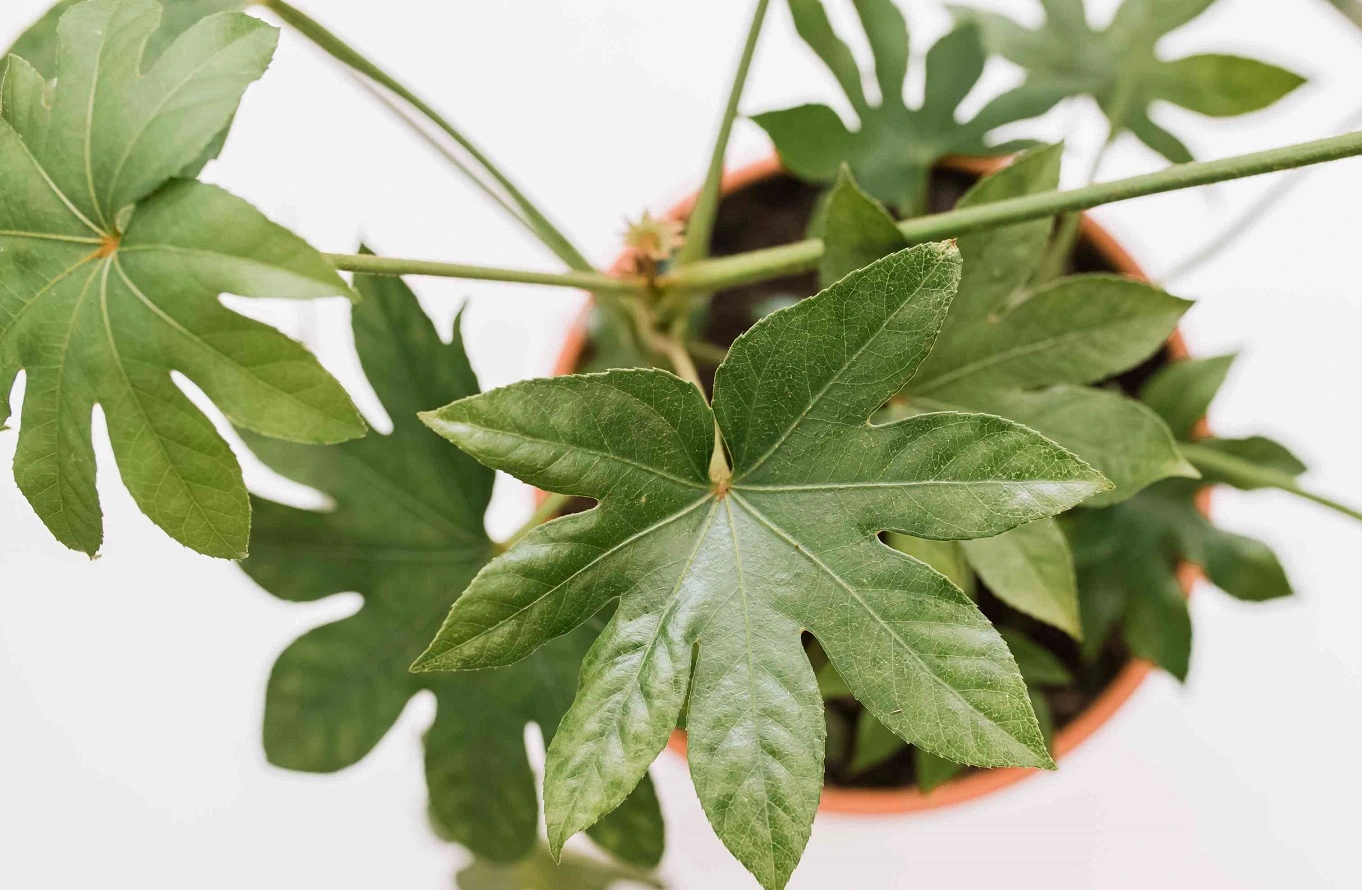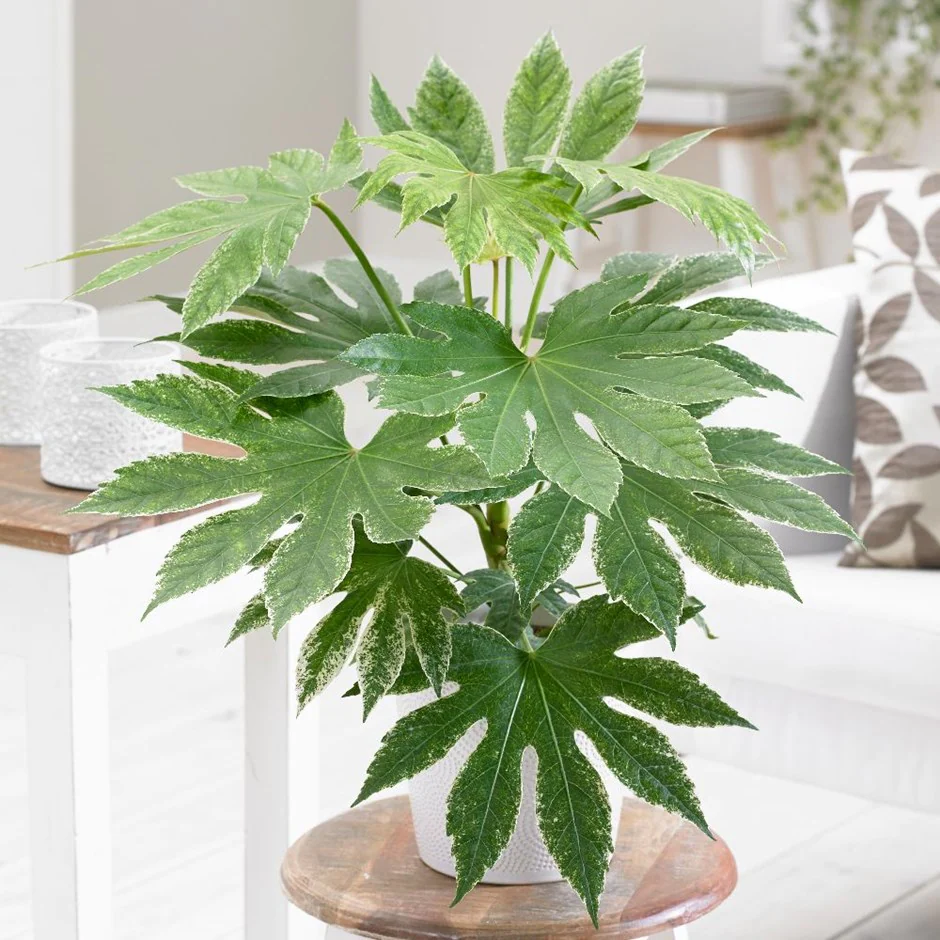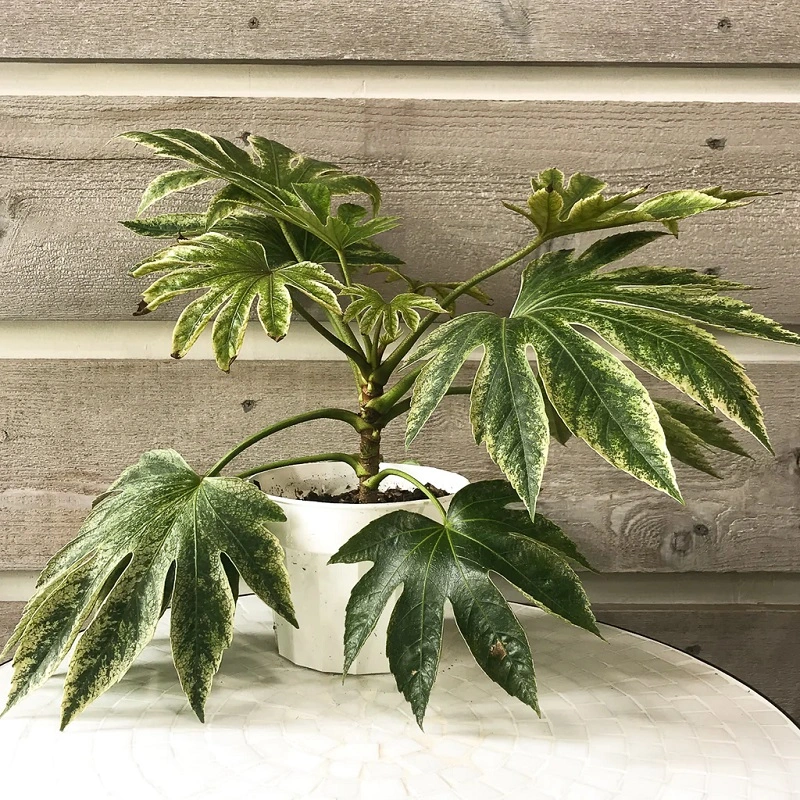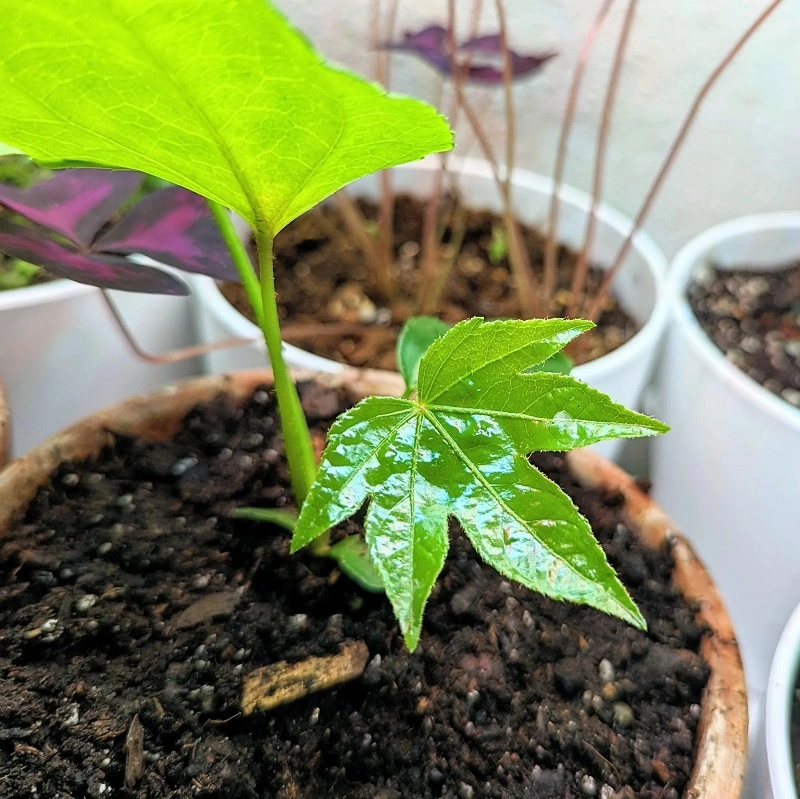Fatsia Japonica - Guida alla Cura, Propagazione, Parassiti, Problemi
La Fatsia japonica è una pianta dal nome misterioso e un'aggiunta perfetta ad ogni interno. Non è una specie difficile, quindi anche i giardinieri principianti e gli appassionati di piante d'appartamento dovrebbero essere in grado di prendersene cura. La pianta è imparentata con l'edera e la schefflera. Degno di nota è il suo tasso di crescita annuale relativamente veloce, grazie al quale raggiunge dimensioni impressionanti in breve tempo. Scoprite cosa c'è da sapere sulla fatsia japonica e come prendersene cura.

Fatsia japonica - origini e caratteristiche
La Fatsia japonica, nota anche come pianta della carta, è una pianta sempreverde. Come indica il nome, è originaria del Giappone, dove si può incontrare nel suo ambiente naturale. Come arbusto di questa regione, può crescere fino a 5 m di altezza. In Europa, la fatsia è coltivata come pianta ornamentale che cresce fino a 1,5 metri (circa 5 ft) di altezza e circa 40 cm (15,7 in) di larghezza.
Un giardiniere esperto può anche piantare la fatsia in giardino. In queste condizioni, la pianta cresce fino a 2 m di altezza.
Nella regione di origine, la pianta sviluppa fiori color crema. Dopo la fioritura, al loro posto compaiono frutti scuri simili a bacche. La Fatsia non fiorisce nei climi più freddi come l’Europa, quindi le foglie sono il suo principale aspetto decorativo.

Fatsia japonica - Varietà popolari
La Fatsia japonica è una pianta d’appartamento relativamente popolare. Ha diverse cultivar. Due varietà sono particolarmente interessanti. Sono:
- fatsia ‘Variegata’ - le sue foglie hanno bordi color crema e la pianta non cresce molto in altezza, il che la rende più facile da curare,
- fatsia ‘Spider’s Web’ - la decorazione principale sono le foglie con piccoli peli che ricordano una ragnatela.

Fatsia japonica - coltivazione ed esigenze di base della pianta
La Fatsia japonica è molto facile da coltivare. Non ha particolari esigenze di collocazione. Può crescere anche in ombra. Le varietà con foglie colorate hanno bisogno di molta luce indiretta. Ma assicuratevi di evitare di esporre la pianta al sole diretto. Potrebbe causare bruciature sulle foglie.
Per assicurarsi che cresca in condizioni ottimali, allontanare la fatsia dalla fonte di calore. Altrimenti, le foglie potrebbero seccarsi. Si può attenuare il problema nebulizzandole o lasciando un contenitore con dell’acqua nelle vicinanze, in modo che si idratino naturalmente.
La pianta non ha bisogno di un terriccio speciale. Un normale terriccio per piante d’appartamento è un’opzione perfetta. Assicuratevi solo che sia sempre umido: è importante annaffiare regolarmente.
La Fatsia japonica può essere coltivata anche in giardino. In questo caso, però, la pianta richiede maggiori attenzioni. La Fatsia tollera temperature non inferiori a -7°C (19,4°F). Se scendono al di sotto, la pianta deve essere protetta con un tessuto, in modo che non geli.

La fatsia japonica ha bisogno di essere annaffiata regolarmente?
La Fatsia japonica richiede un terreno costantemente umido. Ma si noti che un terreno troppo umido è altrettanto dannoso di uno troppo secco. La pianta necessita di annaffiature regolari da aprile a fine agosto - due volte a settimana. Assicuratevi di controllare se lo strato superiore di 1-2 cm del terreno è asciutto.
Quando la pianta va in quiescenza, da settembre a marzo, limitate le annaffiature a una volta alla settimana, ma potete comunque nebulizzare le foglie.
Fatsia japonica - concimazione
La pianta di carta necessita di concimazione durante il periodo di attività, quindi dall’inizio di aprile alla fine di agosto. Potete acquistare il prodotto giusto in un negozio di giardinaggio. Sono disponibili in diverse forme. I bastoncini di fertilizzante sono molto facili da usare, per cui molti appassionati di piante che amano la praticità scelgono proprio questo metodo.

La fatsia japonica è velenosa?
La Fatsia japonica è una pianta velenosa. In condizioni europee, nonostante la mancanza di frutti, può comunque essere pericolosa sia per l’uomo che per gli animali domestici. È particolarmente dannosa per i bambini piccoli. Qualsiasi cosa riguardi la sua cura dovrebbe essere fatta indossando dei guanti. In questo modo si possono evitare i suoi effetti nocivi. Assicuratevi di collocare la pianta in un luogo inaccessibile a bambini, gatti e cani.
Fatsia japonica - propagazione
La Fatsia japonica può essere facilmente propagata in ambiente domestico. È sufficiente utilizzare talee di almeno 10 cm di lunghezza. Rimuovere le foglie inferiori dalla talea e metterla in un ormone radicante. Quando si sviluppano le radici, è possibile spostarla in un contenitore.
Il terreno migliore per la propagazione delle piante di carta è una miscela di torba e sabbia. La talea deve rimanere in questo terriccio per almeno 3 settimane, finché le sue radici non saranno sufficientemente forti e sviluppate. Trascorso questo tempo, si può spostare la nuova pianta nel suo vaso adatto.

La fatsia japonica è vulnerabile a parassiti e malattie?
La cura impropria della pianta è la causa più comune di eventuali problemi. Di solito, si tratta di posizionare la pianta in pieno sole, di non annaffiarla a sufficienza o di innaffiare eccessivamente il terreno. Se ci si assicura di curare nuovamente la fatsia in modo corretto, la pianta tornerà ad essere sana.
Per quanto riguarda le malattie, il Pythium ultimum è la minaccia più grande per la pianta. A causa di questa malattia, le foglie ingialliscono alla base e poi appassiscono e muoiono. Dopo aver tolto la pianta dal vaso, si può notare un marciume caratteristico sulle radici. La malattia è causata da temperature elevate, che si mantengono sui 25-28°C (77-82°F), e da un terreno troppo umido. Potete provare a salvare la pianta infetta usando un prodotto antifungino acquistato in un negozio di giardinaggio.
Per quanto riguarda i parassiti che possono attaccare la fatsia japonica, gli acari, afidi e tripidi sono i più diffusi. Ma questi insetti possono essere facilmente eliminati utilizzando insetticidi adeguati reperibili in un negozio di giardinaggio.

📍 Che aspetto ha la fatsia japonica?
La Fatsia japonica è un arbusto molto alto nel suo habitat naturale. Quando viene coltivata in casa, viene trattata come una pianta d'appartamento che cresce fino a 1,5 m di altezza. Ha un portamento rialzato con molti rami. Le sue foglie sono verdi e lucide.
📍 Come prendersi cura della fatsia japonica?
La Fatsia japonica non è una pianta difficile anche per i giardinieri principianti. Richiede annaffiature regolari, ma evitate di esagerare con il terreno. Inoltre, assicuratevi di proteggerla dall'aria secca in inverno: mettete un contenitore con dell'acqua nelle vicinanze, in modo da idratarla adeguatamente.
📍 Qual è il terreno migliore per la fatsia japonica?
Se volete piantare la fatsia japonica, utilizzate il normale terriccio per piante d'appartamento. Ricordate che il terreno nel vaso deve essere sempre moderatamente umido. La mancanza di umidità è molto pericolosa per la pianta. Un terriccio troppo secco potrebbe causare foglie secche e morenti.
📍 Quanto cresce velocemente la fatsia japonica?
La Fatsia japonica può raggiungere la sua altezza massima in un tempo relativamente breve. In condizioni domestiche, cresce fino a 1,5 m di altezza. La pianta può aumentare anche di 30 cm all'anno. Si noti che ciò è possibile solo se alla pianta vengono garantite le migliori condizioni.
Articoli in primo piano




